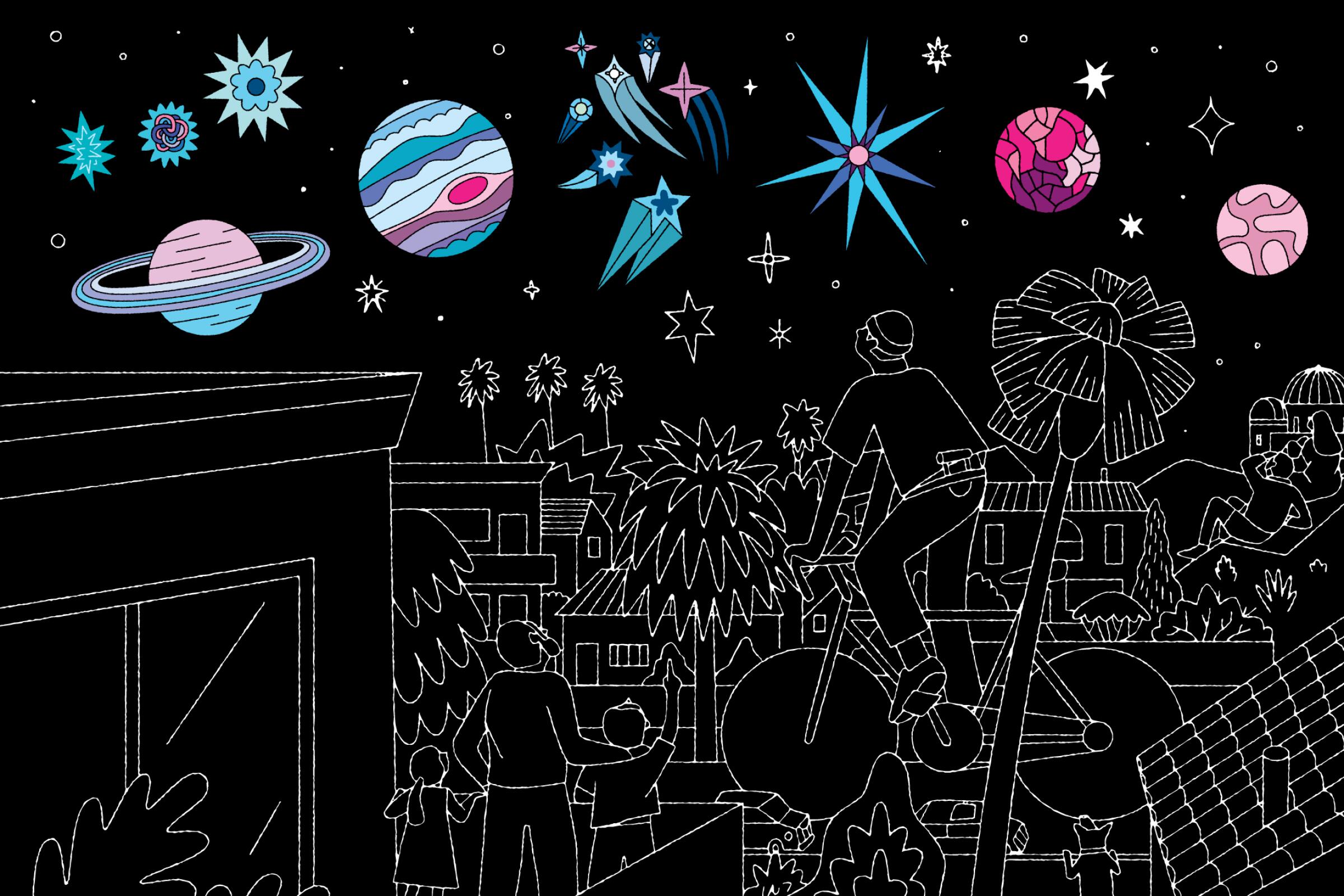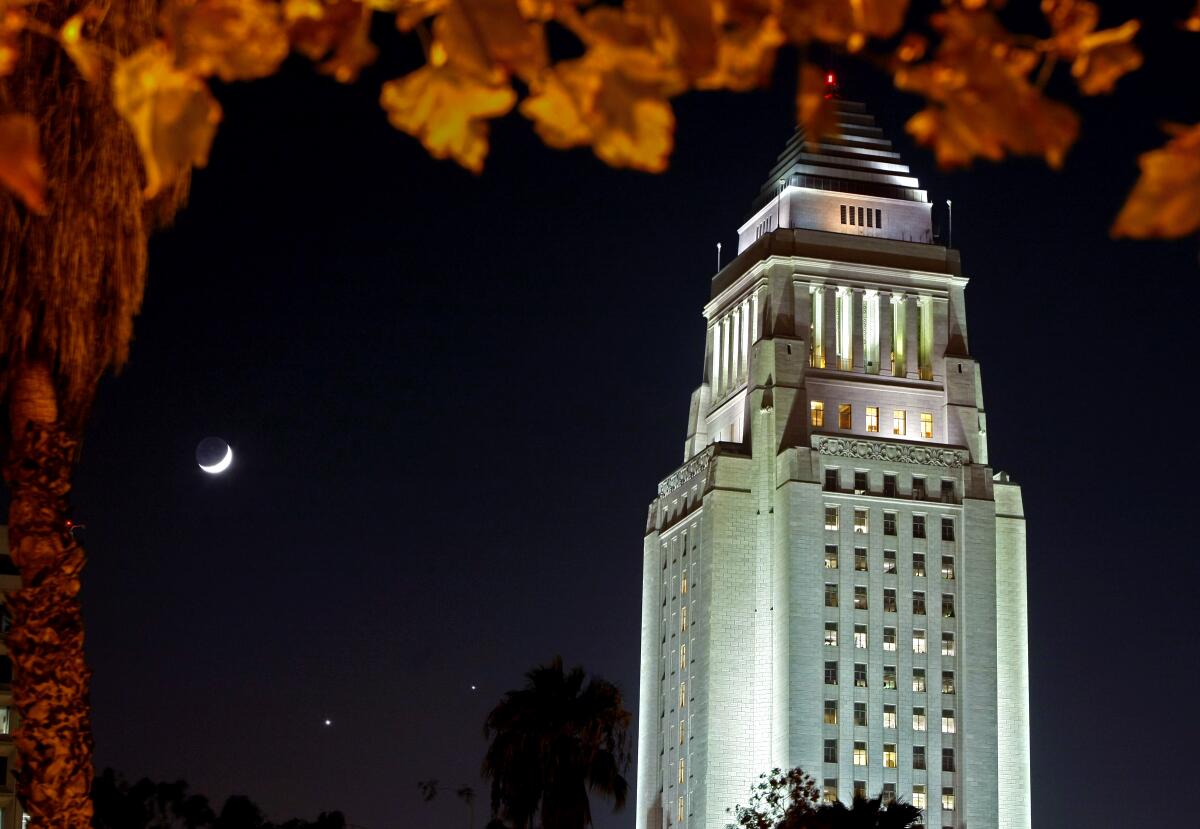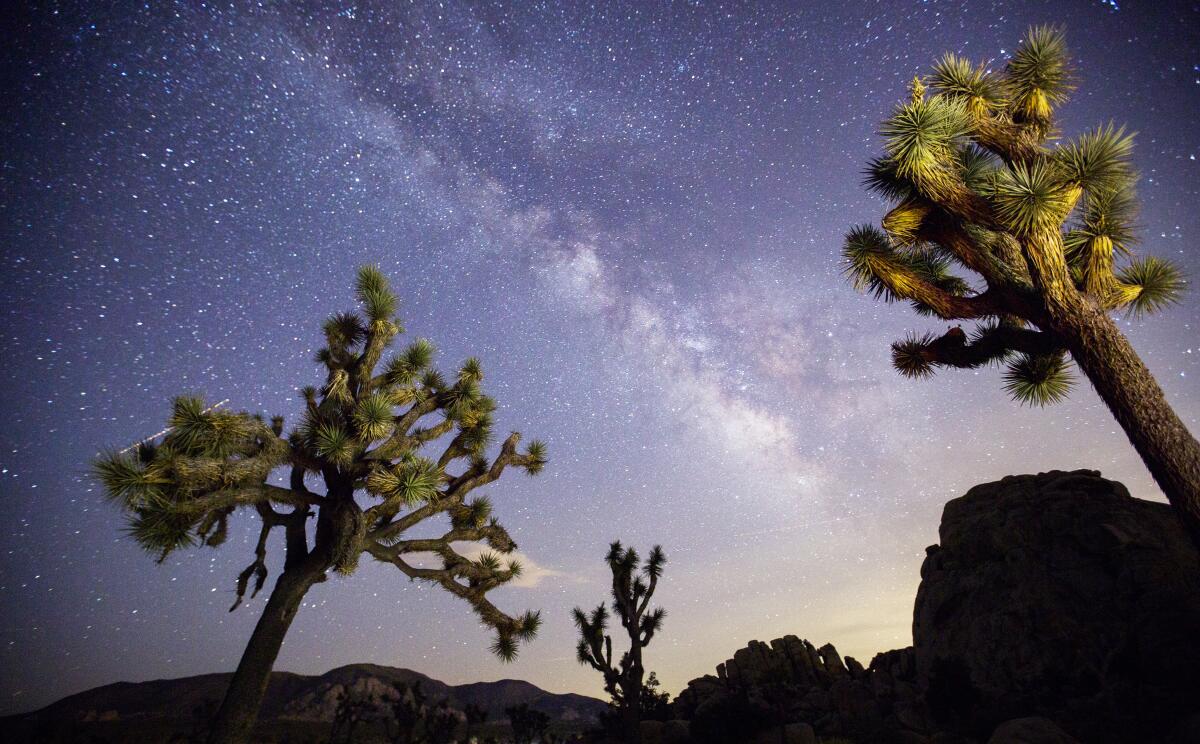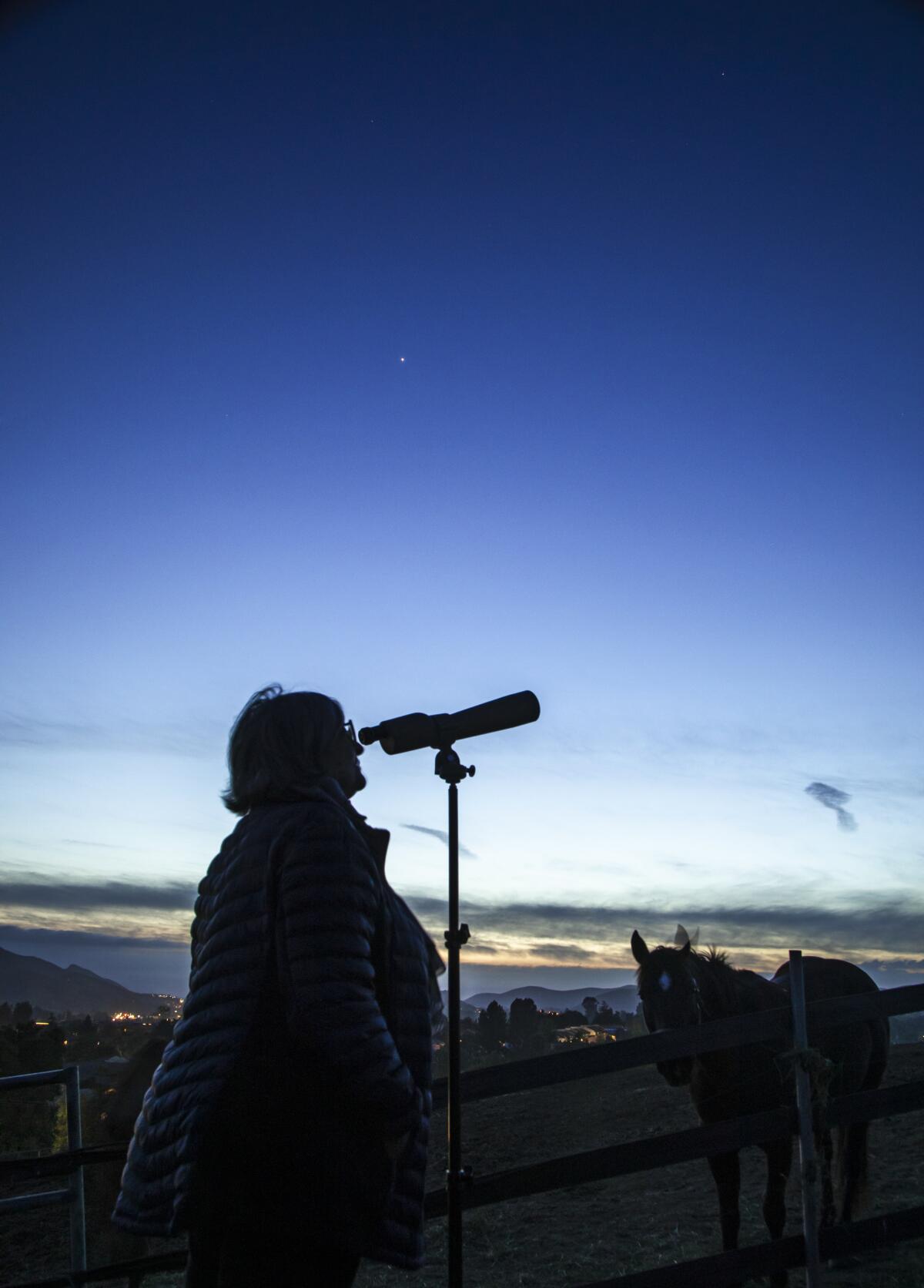Sign up for The Wild
We’ll help you find the best places to hike, bike and run, as well as the perfect silent spots for meditation and yoga.
You may occasionally receive promotional content from the Los Angeles Times.

It’s midnight at a campground on the Idaho-Utah border. Bear Lake, known for its Caribbean blue water and deliciously red raspberries, is a popular place for summer rentals and family reunions. My brother is sharing our camp trailer, but I know he wishes he weren’t. He doesn’t have kids. We have our first. He’s 2, and at midnight he’s screaming, “Outside! Outside!”
Caddis, our Lab, gets anxious when he sees, hears or smells a critter in camp, so I look to him.
There’s no critter. Just a crier. I get out of bed, step around Caddis and reach for my child. I wrap him in a light blanket with one hand and open the trailer door with the other. He is tucked close, which puts his wail right by my ear. “Outside! Outside!”
Two steps down from the trailer, seven steps across the dirt and one big step up so I’m perched on the picnic table. As soon as I sit down, my son looks up. Above us, a black canvas is speckled with white dots. He’s staring at the stars.
We had talked about the night sky before bed. I explained that our week camping coincided with the annual Perseid meteor shower. It’s a show you can see only in the dark when twinkles try to kiss the Earth with sparkles. He didn’t care about the name of the shower, but he keyed in on the twinkles and sparkles. He wanted outside so he could see the show.
A stargazer for life was born in that moment a decade ago. My son is one of many night-sky watchers, and more are developing during coronavirus stay-at-home orders.
What you need to get started in exploring the night sky. Even basic binoculars will do
Looking up at night is a spectacular way to spend a few hours outside isolated in your own space. It settles nerves in unsettling times, and it situates you in the big picture. It also hits the educational mark your temporary home-school efforts may miss.
“I don’t think it’s very hard to get kids to pay attention to the sky,” said Ed Krupp, director of L.A.’s Griffith Observatory. “All it takes is an enthusiastic adult ... . Just go out and look at the moon and discover.”
Krupp started working at the observatory in 1974. More than four decades later, he ensures kids are engaged and adults are entertained, but the observatory is in quarantine like the rest of us. The grounds are taped off, and the telescopes are covered, but the night sky is still open, and you can watch it from home without all the equipment offered at the observatory.
We aren’t quite into the long days of summer, so start gazing after dinner rather than at bedtime. And you don’t need pitch-black conditions, but turn off your house lights to improve your night vision. Here’s how to get started.
Man About Town: Our view of the cosmos from an L.A. hilltop

Look at the moon with a pair of binoculars. An eight times or 10 times magnification is best. (“Almost any pair of decent binoculars exceeds what Galileo had to work with,” Krupp said.) A telescope will magnify more than 10 times, but it’s not mandatory. The topography of the moon’s depressions and ridges will still be visible with binoculars. The dark circular features are craters.
Talk with your kids about what it would be like to walk, or more likely to bounce, on the moon where there’s a lot less gravity holding you down. Two dozen people have visited the moon, but only 12 have walked on it.
Venus is so bright right now that you can see it before dark. “I’ve been on the phone with people calling about a strange light at dusk,” Krupp said. “That’s Venus.”
Look up and a bit west with your naked eye. That blazing hot dot is Venus. It’s about the same size as Earth, which looks ocean blue from space. Venus looks like fire and is covered with volcanoes. The atmosphere is toxic and hot enough to melt lead. It’s no wonder we’re here rather than there.
It doesn’t take a lot of fancy equipment. A modern camera with a longer lens can help you capture the heavens.
The constellation Leo is shaped like a backward question mark. Its brightest star, Regulus, is at the bottom of the question mark. Leo is visible around 9 p.m. by the end of April. The constellation is at its highest point in spring, so unfold a lawn chair, sit and tip your head way back. Leo is right above you. It drifts to the west as summer approaches.
Stay lounging in that lawn chair for Gemini. It shows early in the evening this time of year too. Find the moon, with or without binoculars. The two bright stars lined up nearby for the next few days are Castor and Pollux, the twins.
Sunrises hold many secrets when it comes to the stars. In fact, the sun is a star. It’s one of billions in the Milky Way, but it’s the only one in our solar system. It dictates seasons, currents and climate. The sun makes life on our planet possible, so as it wakes, return to that lawn chair before breakfast. Or walk the neighborhood with your dog at first light.
“Even an ordinary sunrise is a revelation,” Krupp said. “There are wonderful details taking place with color and brightness that our ancestors always looked at that we so often ignore.”
As a toddler, my son picked up on an activity he still enjoys as a teen. Whether we’re in the backcountry or in our backyard, we watch for something cool to happen over our heads. All any of us has to do is look up.
There’s more buzz about looking up in recent years, and that’s partly because of Dark Sky designations for places protected for their star-gazing potential. The designations mean certain areas provide a better night-sky view and include sites that are remote and extremely dark with no light pollution as well as urban with accommodations made to preserve what’s left of the dark.
The International Dark Sky Assn. has certified more than 130 sites worldwide, in a process that can take as long as three years.
California has two Dark Sky parks: Joshua Tree National Park, designated in 2017, and Death Valley National Park, designated in 2008.

More than half the sites are designated Dark Sky parks, but only one site in the United States is designated a Dark Sky reserve. The Central Idaho Dark Sky Reserve was designated in 2017 and includes Sawtooth National Recreation Area and the towns of Stanley, Sun Valley and Ketchum within 906,000 acres of mostly undeveloped wilderness.
Here are the meanings behind some of the designations:
Dark Sky reserve: largest land-mass designation with a 173,000-acre minimum. Its core must offer an exceptional nocturnal environment; communities surrounding the core must support dark-sky preservation.

Dark Sky park: public or private land already protected for natural conservation, such as Joshua Tree National Park. Provides public access and night-viewing programs for visitors.
Dark Sky sanctuary: similar to reserve or park, but in a remote location with limited access. Includes land already protected for cultural or scientific reasons, such as the Massacre Rim Wilderness Study Area in Nevada.
Dark Sky community: town or city dedicated to night-sky preservation, including lighting policies that reduce light pollution and promote dark skies. Borrego Springs, Calif., is a dark-sky community.
Urban night sky: city park or open space with low-light potential surrounded by urban development and artificial light. The first Urban Night Sky designation was Valle de Oro National Wildlife Refuge in New Mexico in 2019.
Sign up for The Wild
We’ll help you find the best places to hike, bike and run, as well as the perfect silent spots for meditation and yoga.
You may occasionally receive promotional content from the Los Angeles Times.